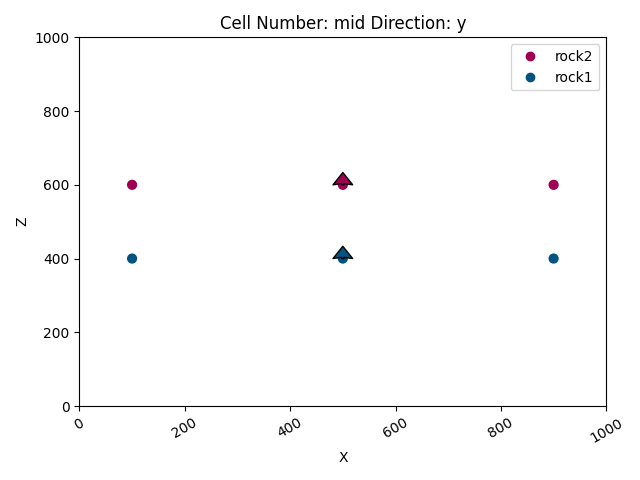Note
Go to the end to download the full example code
Model 1 - Horizontal stratigraphic¶
This script demonstrates how to create a basic model of horizontally stacked layers using GemPy, a Python-based, open-source library for implicit geological modeling.
# Import necessary libraries
import gempy as gp
import gempy_viewer as gpv
# sphinx_gallery_thumbnail_number = 2
Generate the model Define the path to data
data_path = 'https://raw.githubusercontent.com/cgre-aachen/gempy_data/master/'
# Create a GeoModel instance
data = gp.create_geomodel(
project_name='horizontal',
extent=[0, 1000, 0, 1000, 0, 1000],
refinement=6,
importer_helper=gp.data.ImporterHelper(
path_to_orientations=data_path + "/data/input_data/jan_models/model1_orientations.csv",
path_to_surface_points=data_path + "/data/input_data/jan_models/model1_surface_points.csv"
)
)
# Map geological series to surfaces
gp.map_stack_to_surfaces(
gempy_model=data,
mapping_object={"Strat_Series": ('rock2', 'rock1')}
)
# Compute the geological model
gp.compute_model(data)
geo_data = data
Surface points hash: 6f1a39ed77e87a4057f03629c946b1876b87e24409cadfe0e1cf7ab1488f69e4
Orientations hash: 04c307ae23f70252fe54144a2fb95ca7d96584a2d497ea539ed32dfd23e7cd5d
Setting Backend To: AvailableBackends.numpy
/home/leguark/gempy/gempy/core/data/geo_model.py:164: UserWarning: You are using refinement and passing a regular grid. The resolution of the regular grid will be overwritten
warnings.warn(
Plot the initial geological model in the y direction without results
gpv.plot_2d(geo_data, direction=['y'], show_results=False)
# Plot the result of the model in the x and y direction with data and without boundaries
gpv.plot_2d(geo_data, direction=['x'], show_data=True, show_boundaries=False)
gpv.plot_2d(geo_data, direction=['y'], show_data=True, show_boundaries=False)
<gempy_viewer.modules.plot_2d.visualization_2d.Plot2D object at 0x7f088aa48730>
Total running time of the script: (0 minutes 0.842 seconds)



